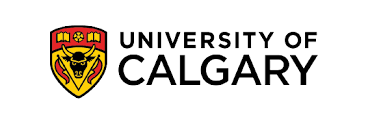University of Calgary: Mural at UCalgary’s Foothills campus honours Indigenous stories, knowledge and traditions
Alarge mural inspired by the historic and spiritual significance of a Tsuut’ina medicine wheel has been unveiled on UCalgary’s Foothills campus.
“The concept of medicine is very big and broad. A western perspective narrows it down but from our Indigenous perspective, it is larger than that. Medicine is the nature of our relationship with everything,” says Dr. Lindsay Crowshoe, MD, assistant dean, Indigenous, Indigenous, Local and Global Health Office, Cumming School of Medicine.
The impressive rendering measures 14.5 metres wide by 6.5 metres tall and brings together four separate works, each by a different local Indigenous artist incorporating perspectives from the Blackfoot, Eyahey Nakoda, Cree and Métis cultures. The mural was officially unveiled Sept. 29 with a sacred ceremony on the Foothills campus in advance of Canada’s National Day for Truth and Reconciliation.
Students, faculty, staff and visitors to the Health Sciences Centre atrium on campus will notice the prominent and colourful addition hanging above the Feasby Student Lounge.
“The mural offers a lasting symbol of the University of Calgary and the Cumming School of Medicine’s commitment to walk the path toward reconciliation,” says Dr. Dianne Mosher, MD, associate dean, Indigenous, Local and Global Health Office.
“It’s a reminder of the important work all faculty, staff and students must do to learn the truths, and actively reconcile the consequences of these truths in the spaces where we learn, work and socialize.”
The mural also demonstrates the important role of visual arts in telling and sharing the stories of Indigenous cultures. “We really wanted to broaden people’s ideas of what medicine is to us traditionally. To give Indigenous people the opportunity to retell those stories in a way that we were told and through our own perspective of the world.
“There’s no better way to do that than through art,” says Sikomh Kokomii, who served as an artist and mentor to the other artists on the mural project.
The mural symbolizes the Cumming School of Medicine’s commitment to its Indigenous Health Dialogue (IHD), a document developed in 2015 to enhance existing Indigenous health initiatives within the faculty, create new opportunities for programming and purposefully respond to the Truth and Reconciliation Commission Calls to Action.
One of the IHD’s recommendations is to increase the authentic inclusion of Indigenous perspective and people on campus to dismantle barriers and bias. For Dr. Aleem Bharwani, MD, director, public policy, Indigenous, Local and Global Health Office, this mural acts as an invitation for non-Indigenous people to begin to dialogue and understand Indigenous Peoples’ distinct histories, perspectives, and experiences — and in doing so to learn, grow, and reflect on the past and on our current role to build toward a future with a collective memory that understands, energizes, and honours each of our unique values, knowledges, and practices — all objectives that align with the principles of ii’ taa’poh’to’p.
“My hope is that people will see this beautiful work of art, be excited about it and reflect on what they saw, like the tipis or the medicines, wondering what they mean. This wonderment sparks enough curiosity that people go on to continue to learn and THAT is a big part of reconciliation,” says Kamâmak, one of the four Indigenous artists to work on the mural.
The entire process for the initiative — from artist selection to design to planning the unveiling — was collaborative, and guided by Indigenous ways of being, doing, knowing and connecting as advised by Indigenous Elders, community members and project team members representing Métis and First Nations of Treaty 7 in Southern Alberta.
“The University of Calgary created this opportunity for us to connect, collaborate and work together. Through this experience, our interconnectedness to each other, the land, the plants and the animals was highlighted,” says Indigenous artist bb iskwew.
The artists met with Elders to learn about traditional medicinal and cultural practices to weave elements of these into the mural to honour the stories and knowledge of the people of Treaty 7 and Métis Nation of Alberta, Region 3.
“There’s medicine everywhere for us. This mural can help show that and for those who are reconnecting to the culture, it’s going to be a great learning experience,” says Indigenous artist Suwatâga-Mu.
The layout of the mural aligns with that of a Tsuut’ina medicine wheel and its four quadrants — east and yellow, south and red, west and black, and north and white. Each artist chose a quadrant of the medicine wheel and a season for their design.
Suwatâga-Mu incorporated winter scenes and the colour white. Kamâmak selected fall and painted on a backdrop of black. Sikomh Kokomii painted scenes of spring highlighted with yellow, and bb iskwew painted summer punctuated with red.
“People may not know what the medicine wheel is, but I hope this art will help them to dig deeper and question what healing and medicine mean to them,” says bb iskwew.

